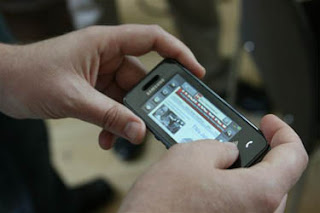
Not surprisingly, Rogers Wireless has reportedly extended its $30/mo. for 6 GBs of data usage 3G cell phone plan to accomodate buyers of the just-announced BlackBerry Bold. The plan, which was initially announced as a promotion the day before the highly-coveted iPhone was released, was also made available to customers buying any 3G device on the Rogers or Fido network.
Rogers says that, after monitoring customer usage, very few people have even come close to the 6 GBs worth of usage. I'd tend to agree, knowing that, after almost a month of heavy data usage with the iPhone 3G, I barely managed to cracked 2 GBs.
The promotional $30 plan will now run until the end of September instead of the end of August, so Bold buyers need not worry about joining the line-ups of back-to-school last-minute shoppers just so they can get the extra GBs worth of surfing. From October on, Rogers will supposedly add new plan options that include 500 MB of data for $25/mo. or 1 GB for $30/mo. An idea I had alluded to months ago has also been adopted by Rogers: the company will be offering unlimited data for the first three months of certain plans so that customers can observe average usage and adjust the plan accordingly if needed. I have to give credit where it's due, and this is a very smart move on Rogers' part.
Existing Rogers customers looking to upgrade to a new 3G device like the iPhone or Bold should keep in mind that the purchase price of the actual phone will vary depending on where you are in your current contract. For example, a colleague of mine who's in the third year of his current contract was told that he could get the Bold for $444: slightly more expensive than the$399 price tag given to new customers.
It seems like Rogers dodged a bullet on the issue of unlimited data for now. But data usage will become even more intense. Networks are getting faster (I'm blown away by how quickly a web page can load on the BlackBerry Bold!), and people will begin to adopt new on-the-go activities, like video streaming. It might take a few years, but we'll probably hear cries for unlimited plans once again; and hopefully carriers will oblige.
UPDATES:
Here's a full list of new BlackBerry data plans to be offered by Rogers Wireless starting October 1, 2008:
$15/mo. = 2 MB of data (such a plan doesn't currently exist)
Rogers says that, after monitoring customer usage, very few people have even come close to the 6 GBs worth of usage. I'd tend to agree, knowing that, after almost a month of heavy data usage with the iPhone 3G, I barely managed to cracked 2 GBs.
The promotional $30 plan will now run until the end of September instead of the end of August, so Bold buyers need not worry about joining the line-ups of back-to-school last-minute shoppers just so they can get the extra GBs worth of surfing. From October on, Rogers will supposedly add new plan options that include 500 MB of data for $25/mo. or 1 GB for $30/mo. An idea I had alluded to months ago has also been adopted by Rogers: the company will be offering unlimited data for the first three months of certain plans so that customers can observe average usage and adjust the plan accordingly if needed. I have to give credit where it's due, and this is a very smart move on Rogers' part.
Existing Rogers customers looking to upgrade to a new 3G device like the iPhone or Bold should keep in mind that the purchase price of the actual phone will vary depending on where you are in your current contract. For example, a colleague of mine who's in the third year of his current contract was told that he could get the Bold for $444: slightly more expensive than the$399 price tag given to new customers.
It seems like Rogers dodged a bullet on the issue of unlimited data for now. But data usage will become even more intense. Networks are getting faster (I'm blown away by how quickly a web page can load on the BlackBerry Bold!), and people will begin to adopt new on-the-go activities, like video streaming. It might take a few years, but we'll probably hear cries for unlimited plans once again; and hopefully carriers will oblige.
UPDATES:
Here's a full list of new BlackBerry data plans to be offered by Rogers Wireless starting October 1, 2008:
$15/mo. = 2 MB of data (such a plan doesn't currently exist)
$25/mo. = 500 MB of data (used to include just 4 MB)
$30/mo. = 1 GB of data (currently the 6 GB promotional plan)
$50/mo. = 2 GB of data (currently not available)
$60/mo. = 3 GB of data (currently not available)
$80/mo. = 8 GB of data (currently not available)






